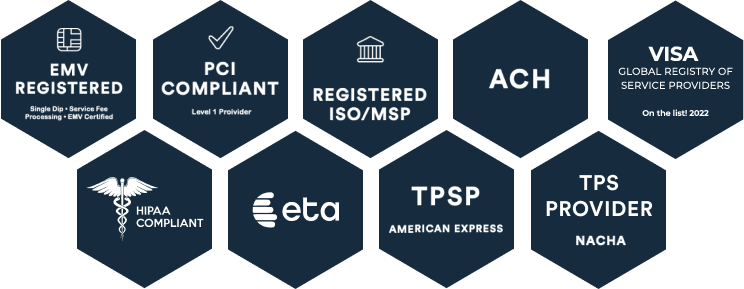To say COVID-19 changed healthcare is an understatement. The pandemic has not only upended the standard patient care approach, but it also has rapidly changed the way healthcare providers process payments.
Though the growing pains and uncertainty still loom, one thing is for certain—technology will continue to transform the healthcare landscape. And that includes healthcare payments.
Let’s discuss this shift in healthcare payment models and how to optimize your payment solution. Simplifying and bolstering patient and staff outcomes begin here.
Table of Contents
- How Healthcare Payment Technology Has Rapidly Changed
- Statistics Regarding Payment Shifts
- What Are the Types of Healthcare Payment Models?
- Fee-for-Service
- Value-Based Care
- What’s Next: Alternative Payment Models (APM)
- What Healthcare Organizations Need
- The Biggest Challenge of Navigating Digital Payments in Healthcare
- Disparate Financial Systems
- Staying Ahead of the Shifting Healthcare Payment Models in 2022 and Beyond
- Streamlined Payment Solutions
- Consumer Engagement
- Revenue Management Reporting
- Bolster Your Staff and Patient Experience with CORE
How Healthcare Payment Technology Has Rapidly Changed
The pandemic made patients concerned about touching debit/credit card terminals at doctors’ offices—76 percent of people now prefer making virtual card payments in healthcare.
Not to mention, the transition to telehealth services (64 percent of Americans had telehealth appointments in 2020) bolstered payment shifts even more. These transitions have pushed many healthcare organizations to change their payment processes practically overnight.
Statistics Regarding Online Patient Payment Shifts
Studies show that digital options in healthcare finances are quickly jumping from being nice-to-haves to necessities:
- Healthcare payment vendor Zotec Partners reports that the number of online bill payments from patients jumped by nearly 200 percent since the pandemic. In addition, the number of patients using time-of-service payments increased by over 50 percent.
- McKinsey reports consumer and provider attitudes toward telehealth have improved. In addition, healthcare organizations have boosted their investments in digital health.
- 40 to 60 percent of consumers are interested in gaining access to “broader virtual health solutions, such as a ‘digital front door’ or lower-cost virtual-first health plans.”
What Are the Types of Healthcare Payment Models?
As you know, there are several types of healthcare payment models out there. For this article, we’d like to highlight two—fee-for-service and value-based care.
Both offer insight into how healthcare payment models have been changing. More importantly, they both illustrate the need for a more transparent, streamlined, and digital payment system.
Fee-for-Service
In a fee-for-service model, healthcare providers are paid for each service they perform—regardless of patient outcomes. Examples include office visits and examinations.
The frustrating part about fee-for-service? The provider generally bills the insurance company and patient at the same time, leaving it up to the patient to figure out what they owe.
This can cause miscommunication on both the patient and provider side, which leads to:
- Unnecessary tracking and paperwork
- Preventable errors
- Lack of transparency
- High costs
Value-Based Care
Due to these drawbacks, there has been a shift from the fee-for-service model to a value-based payment model over the years. A value-based payment system rewards providers based on patient outcomes instead of the number of services the provider offers.
Because this healthcare payment model rewards desired results, many organizations and policymakers believe it improves the efficiency and effectiveness of medical care in the U.S.—you would expect to see better patient outcomes at a lower cost.
What’s Next: Alternative Payment Models (APM)
Similar to value-based care, alternative payment models (APMs) aim to incentivize providers to offer low-cost, high-value care.
According to the Health Care Payment Learning & Action Network (LAN), APM adoption increased from 30.1 percent to 35.5 percent between 2018 and 2020. And APM will only continue to increase across payers (i.e. Medicare, Medicaid, private health insurers, etc.)—87 percent of payers believe this will be the case.
What Healthcare Organizations Need
As patients’ expectations evolve throughout the pandemic, healthcare payment technologies need to do the same.
Healthcare organizations need to adopt a contactless, streamlined payment solution that allows both providers and patients to have access to patient financial responsibility information. This would reduce the notorious friction in traditional healthcare payment models and elevate the patient experience.

The Biggest Challenge of Navigating Digital Payments in Healthcare
But of course, spearheading that goal is easier said than done. After all, the sudden COVID-19 shifts caused massive burnout in the healthcare system; a burnout we’re still trying to recover from today.
A large part of recovery lies on the payment side. And the most evident challenge is the fact that organizations use multiple, disparate payment systems.
Disparate Financial Systems
Healthcare organizations have leaned heavily into multiple financial systems to conduct reconciliations. This creates a complex process that brings several issues such as:
- Increase in training/staff costs
- More manual work, which leads to input errors, financial imbalances, and audit issues
- Poor customer/patient service
- Cash leakage and revenue loss (more than a third of health systems have faced more than $10 million in annual debt)
Staying Ahead of the Shifting Healthcare Payment Models in 2022 and Beyond
Healthcare providers can confidently navigate the changing tides by relying on a single payment solution—an integrated platform that offers a transparent, birds-eye view of the entire healthcare payment lifecycle.
This payment solution should entail three components:
1. Streamlined Payment Solutions
Moving payment systems to one platform can bring a unified view of patient financial responsibility. Not to mention, this can help your team earn quality healthcare that both parties—provider and patient—can be satisfied with.
2. Consumer Engagement
The statistics we illuminated earlier illustrate that patients want modern, digital healthcare experiences. Having a unified and open platform where consumers can access their care details and costs can encourage positive consumer engagement.
3. Revenue Management Reporting
Revenue cycle management in healthcare streamlines the business and clinical sides. Relying on a revenue management reporting system allows healthcare teams to gain real-time access to patient data.
Sixty-seven percent of patients are willing to explore the cost of care before seeing a doctor. Revenue management reporting can help providers calculate insurance payments during a patient’s first appointment—rather than waiting until after the patient leaves the clinic.
Bolster Your Staff and Patient Experience with CORE
If solidifying patient trust and offering exceptional care is at the core of what you do, learn more about CORE’s healthcare payment solutions.
With over 400 integrations, our integrated payment platform offers the flexibility and transparency you and your patients need to mitigate the burnout and friction in your existing payment models. Contact us for a free demo.






